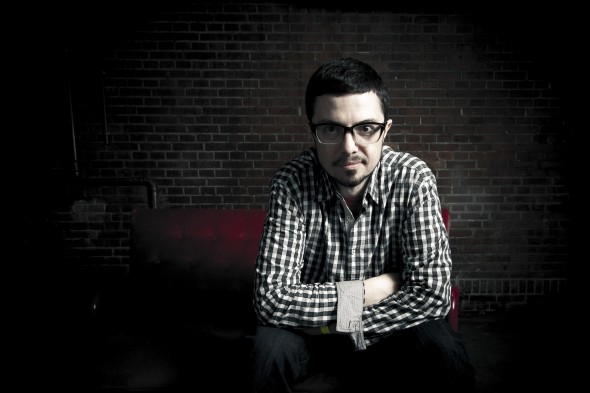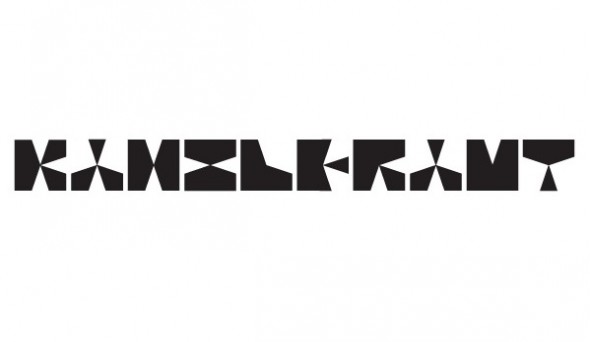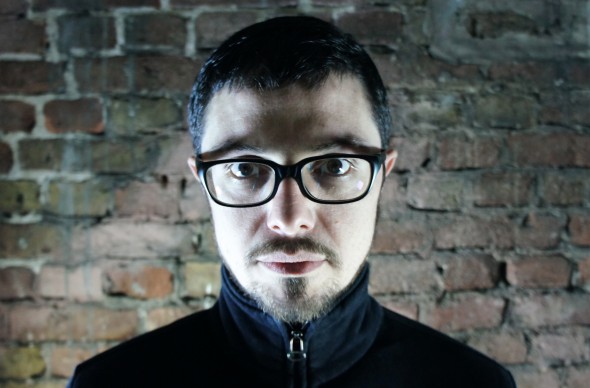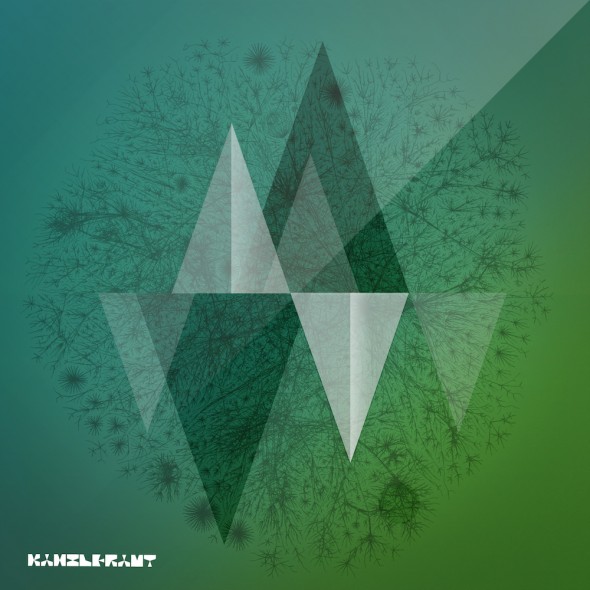It’s been a youthful voyage for our interview guest this week. For those of you lucky enough to be a part of the scene in Berlin from 1994 onwards, the Kanzleramt imprint, and it’s derivatives k2o and uturn, launched what has became one of the better examples of challenging experiments. His production has spanned across Soma, Rejected, as well as Josh Wink’s Ovum. A consistent booking schedule globally has ensured that continued exposure that’s justified his presence for over 20 years, and yet still, it feels as though this story is only commencing.
Heiko Laux wraps up 2014 and traverses what’s to become a new saga as the year rolls on.
—
Kn: 20 yrs in the business Heiko. How do you look at life after so long and whats your perception of yourself after being in the game for so long?
HL: I think the overall feeling is still the same. I’m still having fun creating and also finding new music from other artists, compiling these threads and releasing. The overall urge is very similar. I didn’t really have a long term plan then and I don’t have it now. There is the typical ‘me’ perspective aspect that you don’t see clearly ahead, to step out and watch it from a neutral point of view to make sense of it all, but I’m just caught up in it, I’m not really giving it so much thought though. There’s been quite some development in the meantime, but I can honestly say in retrospect “holy shit it’s been 20 years!”. So that’s how it’s hit me. I had to do the math three times and find my first releases, catalogue numbers, my license of doing the business with my record label and working out when this was done and thinking, “yeah this was really in 1994”.
Kn: Lets talk about your label, Kanzleramt. What vision did you have when you started the label? Do you think you’ve maintained that vision?
HL: When I started the label I really wanted to be a part of that whole movement which wasn’t fully grown yet, it was still growing. Everything had no limits, no borders, there was a fascination of where this was going to go. No one had bumped into any obstacles so far, it just could grow. I was so caught up in the energy of that, but I was interested in this direction of music by dub mixes of pop records from Madonna or whatever. If you bought the 45 12″ single there were always these cool instrumentals and dub mixes on the b sides. I was already loving them and that became fully ignited when techno came out. It was like, ok leave away the popy shit and the singing and just play with the tunes with machines. So the love of playing around with music is somehow the same. But it seemed to grow to a certain level around the early 2000’s, from then on there were ups and downs pretty much for techno, and now it’s on an up, so here I am again and still loving this.
Kn: Well I’ve been following your music for quite some time, including other aliases such as “Offshore Funk” and one thing you’ve managed to achieve is staying relevant without veering off to much.
HL: With regard to veering off too much, this is because it’s me. I’m liking certain things…certain sets of chords. In techno I’ll adapt some of the Detroit feeling into that and with “Offshore Funk” I also like it when it’s fully orchestrated with a complete theme which is not really a requirement for techno. It’s hard to hold myself back and not go another layer and another layer and keep it simple and focus more on the drive, the overall drive of the track so it will work in the club actually and not overwhelming the dance floor with another melody that I can write on top. With “Offshore Funk” I was free to do that. That’s what it was about. Making more complete music. I separate myself into song mode and track mode, so for the club I want tracks.
Kn: The “Chrome” album in particular under your “Offshore Funk” alias was a lot more free form, jazzier if you will, than what you would inherently produce under your own name.
HL: Yeah the song mode and track mode really stuck with me. In fact Teo is coming over in 40mins and he’s a studied jazz musician and I have these projects with him as a result of becoming studio neighbours randomly in the same building. So in the beginning we’d pass each other and he’d be running by and say a quick hello. Then after like a month or two, i’d ask, “what are you doing?”, and he’d be orchestrating music for some TV series, some ‘stringy’ background music for documentaries and so I realised this guy has a lot of skill in arranging and finding solutions for themes coming back to home which I couldn’t develop. I can drift off but I cant come back to where I came from, back to home. I’m having a hard time in doing that. He’s studied this and he’s educated in this field and he showed me you can go here and here at some point, and I thought, “holy shit this is good”. And then instead of doing ‘paddy’ ‘stringy’ stuff, i replaced this with doing chords and grooves and rhythms with ‘stabby’ chords, and I was able to find the solution to coming back to home, because I had the notes already given, I just had to groove them out pretty much and “Offshore Funk” as a combination
came out.
Kn: Has that played a major role and inspiration in your new Album ‘Fernweh’?
HL: Yeah because Teo is like my mentor in this way. Ive learned a lot in the way of arranging things. I was so stuck with a track and giving myself such a hard time finishing a track that it became painful. So he’d come over and listen to it and say, “what the fuck are you taking about? You’ve got more than what you need for that track. I know what you want to do. You can leave this away and this away and you still have more than enough for the track. Everything needed is already in there. Give it a frame and you’re good”. So within like 20mins I gave it a frame and the track was done. It’s great. It’s the second opinion thing, when you can’t really see where you’re at because your obsessed with it in a way.
Kn: After listening through ‘Fernweh’ you can really get a sense of your musical maturity on the new album so I’m sure thats played a big influence…
HL: Yeah, particularly I feel on the ‘Align’ track which is the last on the album and the first I did, which I produced back in 2010, I had to look up the first saved arrangement when this file was produced and i’d been saving this for a long time now, and I was working on this break in the middle where it was leading into more strings and into more strings and it was working up and up and up and I couldn’t find the resolution to come back home, and I was stuck. And I was learning this bit by bit and trying again and again. So i’d open it, work on it a little bit and in the end I realised that just adding more layers to conclude it, back to where it came from to finish it. I didn’t really write that, so this took me 4 years to write this as it is now. You know you always keep on learning things, music is so endless.
Kn: ‘Fernweh’ is your 5th solo album and translated into English it means wanderlust…
HL: (laughs) I didn’t know that…actually I tried to translate it a while back already and I couldn’t really find anything…because wanderlust, you can also say that in German as well, like I want to be out in the open having fun walking through the forest or something. But ‘Fernweh’ I think is a more intense emotion of it. Really wanting to be someplace far away. Like I could have ‘Fernweh’ coming to Australia again, just to hear the birds singing and the traffic light noises. Certain things are coming back to mind now. I think it’s the opposite of homesick actually. You know if I’ve been homesick far away in Australia and I want to get back to eat a schnitzel or something like that…it is a more intense emotion I think.
Kn: Was there a philosophical approach behind the new album Heiko, or a story in particular that you wanted to tell with this new album?
HL: I would say its more about sketching out how I feel about the world. That can’t be called philosophical for itself but I always go along with the idea that music and songs and soundscapes in general are a lot quicker than words, so by doing these interviews I’m actually refining in retrospect what I’ve actually done and then find the words for it. When I’m doing it I’m in the bubble and I don’t have any words for it at all, so there is nothing I want to say about this and I’m having a hard time finding track names, except for ‘Fernweh’ which was like right there, even before the strings came up, so when I first saved the file I called this one ‘Fernweh’. My fingers were writing it, I wasn’t really thinking about anything. And also for ‘There There’, it was right there, as soon as the chords came up I called the track like that and saved it and just stuck with it. With pretty much everything else in there, I would think like, hmm, how do you not call this thing something stupid. You know to come up with something that actually sounds cool and could be identified and leave some leeway into whatever the listener wants to project in the track.
Kn: With all the wisdom you must have under your belt now and being aware of music – what advice would you give people starting out in electronic music?
HL: Don’t do too much and find that thing that you’re most comfortable with and stick with it. If you’re trying to sound like some music already, find a clone, that is a good learning process if you want to do that, but that doesn’t define you. The simple ideas work the best and if you have something simple and working which I find in a lot of the demos I’m getting and most of the promos I’m getting…I’m liking the first 30 seconds and then I feel there’s so much stuff to edit, like the same problem I’m having, and I had help from Teo. You already have everything there, this is just additional layers that are not really significant for your idea, so leave that away and then find a frame for it. Its the same advice I can give to everybody else. And if you’re lucky, this is away from what other producers are trying to do, and then you have like a unique little niche you can occupy in this world of this huge music tree.
Kn: If we were to have a conversation another 20 years from now, what would you say you would be most proud of?
HL: That I was actually able to do this. Im making a living out of this with the skills I have learned and the feeling of wanting to create is present…and it hasn’t faded a lot. You know I’m lazy by nature so I’m not getting out of the couch if I don’t have to, but if it’s urging me i’ll stop doing what I’m doing and sketch out something or change something or work on an idea I had a year ago or 5 minutes ago, it doesn’t really matter, up to the point where I can be a little more satisfied. As long as this feeling is staying with me and opened up these opportunities to release music and talk to you for instance or bring me around the world, you know this is something which is somehow anchored in me and as long as I feel this I’m going to do music, it’s very satisfying.
Kn: What are the things that urge you to push yourself a little bit more?
HL: Im pretty much influenced by all audio around me. I like the doppler effect when the bus is driving by, or some car with a siren or any sort of physical sounds like a pressure release, metal crashing into metal or how objects resonate when hit and stuff like that. Lots of stuff from nature, I had this kookaburra like sound in the first track. This is just a little snippet in my sampler, and it’s a pitch envelope and theres an LFO speed along with that and then the wav is somehow looping, the sample is looping, it’s just a snippet of a sample in blank space that goes faster and slower by key release and I add all these functions to play around with it but I cannot predict what will come out, because there are too many variables. It’s just to play around and then this comes up which is triggering the right sort of feeling in me and then I capture it as this. So this is where to get the inspiration from pretty much.
Kn: Did you challenge yourself in terms of the production process for this album?
HL: I think with previous albums I was trying to come up with new ideas and explore more, and in a way this is more a return to sounds that I feel really comfortable with. I didn’t really re invent anything other than translating it from the earlier analogue studio to mostly plug ins and samples and stuff like that. Because I’m lazy, its all in the box and whenever I flip open the laptop, I can edit and arrange the idea and return to it exactly how I left it and work on 20 things at the same time pretty much. With a board, which is not automated you cant really do that, and never be able to reproduce the exact sound…which was like pressuring me earlier once you had your idea going and then hit ‘record’, and then you had to record and jam it and then this was the take because by the end of the jam I would of twisted any EQ on the board, except the kick drum, and after your mix was pretty much ruined when you’re trying to turn it back to the beginning to re record whatever you just did was different and it wasn’t so alive anymore. A lot of the older tracks I would realise only on the fly that this was a mistake and this couldn’t be edited out later, so I had to keep it running long enough to be able to edit out the part before and then do it again but still the same take, the same recording. I’d record every track at around 10-15 minutes, and then cut out the part where I jammed in things I didn’t really want in the final release.
Kn: Now that the new album has dropped what can we expect next in terms of tours and releases?
HL: The agency is working on a tour which starts at the end of January and February mostly in Germany. I have versions I made of the album tracks which I decided not to do as digital exclusives along with the album. I got advice from Steve Rachmad to stick with the main tracks and release the versions later, rather than releasing dub versions and reduced mixes from the same ideas and not to put it out all at once and stick with the main tracks, and I was totally feeling that he was right about it. So I picked my versions, and only the 8 tracks to achieve a better density of ideas on the actual album. I feel if I go back to the other solo albums, there are some great ideas in it. But there are tracks where I wouldn’t have really needed that, and skipped 3 tracks off any album and made it one disk, which would have made it a better album. It just gives a better picture of everything. The next releases will be remixes. I have them sitting here already mastered. They’ll be released in conjuction with the tour. I also have a list of remixes I have to do on the back of the release of the album so as soon as we hang up i’ll be getting back to work on those.
Kn: Thanks for your time Heiko and good luck with the Album…
HL: Thanks…
Official Website
FB
SoundCloud
Buy The Album on 12
–
George Alatakis, 14th January 2015




